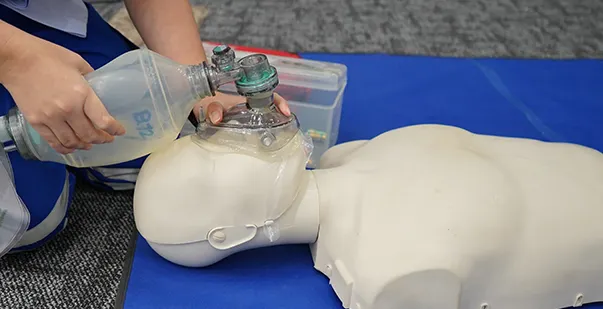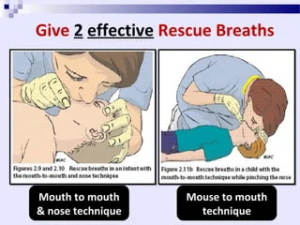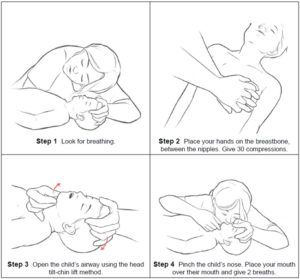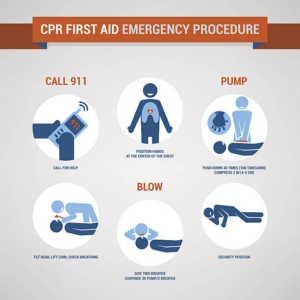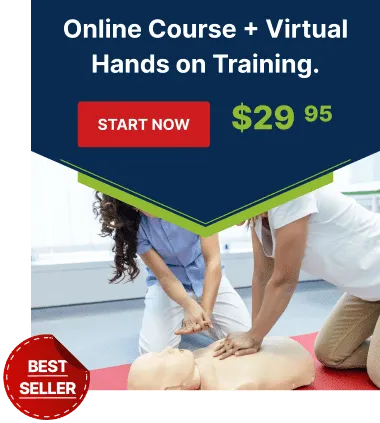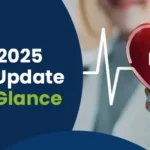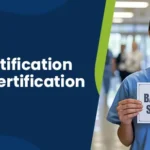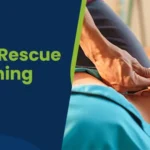Table of Contents:
- Introduction
- What are Mouth-to-Mouth Rescue Breaths
- Indication for mouth-to-mouth rescue breaths?
- How to Perform Mouth-to-Mouth Rescue Breaths?
- Significance of Rescue Breathing in CPR
- Conclusion
Do you know that the lack of oxygen for a mere 2-4 minutes can lead to irreversible brain damage? If you find yourself in the position to save someone who has stopped breathing, providing rescue breath will stabilize the person until the emergency medical services arrive.
Rescue breathing is a first aid technique that involves blowing air into the patient’s lungs when their respiratory system is not functioning. In case of cardiac arrest, it is often performed with chest compression in CPR (Cardiopulmonary Resuscitation).
In this blog, we will explore the indication of mouth-to-mouth rescue breaths and how this technique can save someone’s life if they are stopped or struggling to breathe. Let’s get started!
Master ACLS Now
Get ACLS certified with confidence
What are Mouth-to-Mouth Rescue Breaths?
Rescue breaths, often known as ‘mouth-to-mouth’ is a component of CPR where a responder breathes into the victim’s mouth to try and deliver oxygen to their lungs. However, it is recommended to use barrier protection between the rescuer and the victim for secure and better outcomes. The technique forces air into the victim’s lungs when they stop breathing due to cardiac arrest or airway obstruction. You might need to deliver rescue breaths in the following situations
- Near drowning
- Overdose of drugs
- Carbon monoxide poisoning
- Electric shock incidents
- Inhalation injuries
- Severe asthma attack
- Medical conditions like pneumonia
Indication For Mouth-To-Mouth Rescue Breaths
When a patient isn’t able to breathe on their own, air is delivered to their lungs to deliver them oxygen to survive. In a medical setting, this can be performed using equipment like a ventilator or respiratory. However, outside the hospital setting, you need to perform rescue breaths. Thus, you should know what is the indication for mouth-to-mouth rescue breaths for immediate interventions.
Let us explore some of the key instances when mouth-to-mouth rescue breaths are commonly essential.
-
Absence/ Struggle of Breathing
The primary indication for performing mouth-to-mouth rescue breathing is when the victim shows signs of struggle or absence of breathing. If the individual is not breathing or has an irregular breathing pattern, you need to provide immediate rescue breaths to ensure that adequate oxygen is being delivered to their lungs and circulating throughout their body.
-
Respiratory Distress
If you find the victim suffering from respiratory distress involving symptoms such as gasping for air, wheezing, or difficulty breathing, you might need to perform mouth-to-mouth rescue breaths. This will assist them in their breathing efforts by alleviating their distress and improving their oxygenation level.
-
Cardiac Arrest
During an episode of cardiac arrest, the heart ceases to function in the victim, effectively compromising the body’s oxygen supply. Administering mouth-to-mouth rescue breaths as part of CPR will help maintain the oxygen level in the bloodstream, supporting the function of every vital organ until advanced medical help arrives.
-
Drug Overdose or Poisoning
Drug overdose or poisoning can cause breathing difficulties or respiratory arrest, where the victim stops breathing altogether. Therefore, drug overdose is also an indication for mouth-to-mouth rescue breaths. Providing mouth-to-mouth rescue breaths is vital in such cases to deliver oxygen to the lungs, maintaining ideal bodily functions.
-
Drowning or Choking
In emergencies like drowning, suffocation, or choking, where the airway is blocked or filled with water, mouth-to-mouth rescue breaths are crucial. Clearing the airway and delivering enough oxygen can prevent further damage and greatly improve the person’s chances of survival.
-
Anaphylaxis
During anaphylaxis, a severe allergic reaction, victims can experience swelling of their airways, which might cause difficulty breathing. Performing mouth-to-mouth rescue breaths in such incidences will support the oxygenation rate until first aid treatments such as epinephrine and antihistamines take effect to counteract the reaction.
-
Trauma
Trauma, like injuries to the head or chest, can cause distress or compromise the respiratory system. In cases where the victim is unable to breathe or is unconscious due to the trauma, mouth-to-mouth rescue breaths will aid in maintaining adequate oxygen levels until definite medical support is available for advanced treatment.
Read More: 4 Effective Methods to Deliver Rescue Breaths Safely
How to Perform Mouth-to-Mouth Rescue Breaths?
Now that you know when mouth-to-mouth is needed, it’s time to learn how to perform it accurately. If you encounter an individual who has stopped breathing, follow the step-by-step guide on how to act quickly and confidently.
Call 911
If you see a victim who isn’t breathing and is unresponsive, call the emergency services right away. If you are in a group, ask another person to contact the EMS while you proceed with the next step. You need to be aware of the following situations where someone isn’t breathing but has a pulse.
- The victim isn’t breathing but makes occasional gasping sounds, which does not sound like normal breathing.
- The victim experienced respiratory arrest before cardiac arrest. You have to begin CPR immediately if you can’t find the pulse in them.
Open the Airway
To effectively deliver the rescue breaths, the victim’s airway must be clear and open. To open the airway, follow the below steps.
- Place your hand on the victim’s forehead.
- Gently tilt their head back slightly.
- Use the fingers of your other hand to lift their chin upward carefully.
Check for Breathing and Deliver Rescue Breaths
Once the airway is open, check the victim’s breathing rate. Watch, listen, and feel for any signs of breathing, like chest movement, airflow against your cheek, or exhalation sounds. If the person is not breathing, you must begin to give rescue breaths.
You can proceed to give rescue breaths with the following steps,
- Use the finger of your one hand to pinch the victim’s nostrils shut. It will prevent air from escaping through the victim’s nose.
- Cover their mouth with yours, forming a seal so that air doesn’t escape.
- Give rescue breaths by gently breathing into their mouth. A rescue breath should last about one second. You can aim to give a rescue breath every five to six seconds.
- Now, you can check if the victim’s chest rises as you deliver the first rescue breath.
- Continue to provide rescue breaths until the professional medical services arrive at the scenario.
Significance of Rescue Breathing in CPR
When your body ceases to breathe, the oxygen supply will eventually decrease, leading to life-threatening situations. Knowing the indication for mouth-to-mouth rescue breaths in CPR has the following benefits.
Provides Adequate Oxygen
Performing rescue breathing supplies sufficient oxygen to the victims’ lungs. It plays a vital role in the chain of survival, especially when the victim cannot or struggles to breathe on their own. As rescue breaths deliver oxygen directly into the lungs, it will maintain the oxygen levels and prevent hypoxia.
Prevents Brain Damage.
Your brain is highly sensitive to oxygen deprivation. If there is oxygen deprivation for 1-3 minutes, you may lose consciousness. · At the one-minute mark, brain cells begin dying, leading to hypoxia and irreversible brain damage. In such circumstances, performing rescue breathing as a part of will restore ventilation and provide oxygen to the victim’s lungs. Rescue breaths are considered to be more effective in supporting several other vital organs when combined with chest compressions.
Stabilizes Life Until the Arrival of Professional Help
Rescue breathing will aid in stabilizing the victim’s condition and sustaining their life until emergency medical service arrives at the scene. Learning the basic life-saving skills will help you revitalize the victim again, maintaining the condition to reduce the long-term damage until the emergency medical professional takes over. It is especially crucial in medical emergencies like choking or respiratory arrest.
Read More: How Long to Perform CPR: Essential Guidelines and Timing
Become a Proficient in Rescue Breathing!
Mouth-to-mouth cure breaths can be performed during a variety of emergencies, from drowning and choking to respiratory distress and SIDS. However, whether it’s due to fear of performing the steps improperly or the fear of coming in close contact with a stranger, studies have shown mouth-to-mouth rescue breaths to be a barrier to care.
Learning the indication for mouth-to-mouth rescue breaths gives you a sense of confidence and makes a prominent difference in sustaining someone’s life. It will help you to assess properly through the look, listen, and feel technique. Moreover, learning how to perform this life-saving technique can empower laypersons and medical professionals alike to take action confidently and potentially save a life in an emergency.
References
